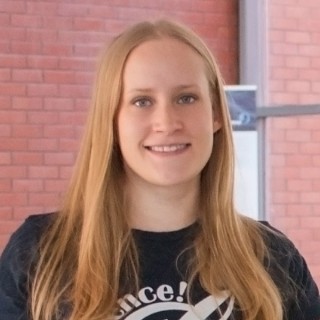
I’m a geologist, and one of those terribly annoying people who really love their jobs. Recently, my work has moved from land-based research to deep marine research in a quest to study the least-explored part of our world, and learn more about seafloor hot-springs (AKA hydrothermal vents or “black smoker chimneys.” Of the many things I have learned working on a research vessel, some of the more surprising include…
4. The Scale of the Sea

Big. Really, really big. Huge. Immense. Vast. Somehow, these words do not fully capture the enormous scale of the ocean. The Pacific Ocean alone covers more surface area of the planet than all of the land combined. This seems like an obvious revelation, but it’s hard to fully comprehend until you go to sea. The ship is engulfed by an endless horizon of water as we travel for days and weeks, no land in sight. The current research cruise aboard the R/V Falkor is searching for hydrothermal vents in the Mariana Back-arc, and is more than a day of travel to the nearest port. Many research cruises are even further from land. If we were to drop a 7 kg bowling ball off the side of the ship, it would take over an hour to reach the bottom (and this isn’t even the deepest part of the ocean!). This creates an extreme research environment with unique challenges that must be overcome in the name of science.
3. Technical Challenges
Our work lies at the bottom of the ocean, where tremendous pressure is exerted from the weight of the water column above. For every 10 meters of water depth, the pressure increases by one atmosphere. At the depths of the Mariana back-arc, reaching 5000 m below sea level, there’s 500 atmospheres of pressure. That is equivalent to the weight of an elephant standing on your big toe! Our research equipment—including the Sentry Autonomous Underwater Vehicle (AUV) that lets us survey the water column, photograph, and map the seafloor—must be designed to deal with the crushing pressures encountered at these great depths. Small structural weaknesses can lead to complete equipment failure (as was the case with catastrophic implosion of the Remotely Operated Vehicle Nereus in 2014). Additional challenges include navigation and communication of the AUV, which requires acoustic waves that travel slowly and attenuate easily (“Imagine trying to drive a car by sending a text message once per minute,” says Carl Kaiser). Luckily, we have a highly skilled team of technicians and crew to operate and fix this specialized equipment so that we can achieve our scientific objectives.
2. Different Scientific Perspectives

As an economic geologist, I am interested in hydrothermal vents because it is a unique environment to study actively forming ore deposition. The heat provided by underlying magma chambers drives circulation of seawater through the ocean crust, and this heated seawater leaches metals from the rocks and subsequently precipitates the metals at or near the seafloor where mixing with cold seawater occurs. Many of the deposits we mine on land for copper, lead, and zinc formed through this geological process on the seafloor, so by studying modern seafloor deposits we can learn about the ancient deposits on land. This research is fundamentally important for developing a framework for the responsible stewardship of our resources. During this cruise, I quickly learned that this economic perspective is only a small part of studying hydrothermal vents, and the other researchers on board have very different interests and objectives. These vents are directly linked to submarine volcanism, and given that 80% of Earth’s volcanism occur under water, this provides a natural laboratory for geologists to study the processes that shape the earth. In addition, hydrothermal vent sites are critically important for understanding marine chemistry, in that the chemical reactions that take place have an impact on the entire ocean and atmosphere. These vents provide the chemical energy required for unique “chemosynthetic” ecosystems that shed light on the distribution and evolution of life, and may provide clues for the origin of life on Earth. Ultimately, our combined research is about gaining a better understanding the planet we live on.
1. Lasting Impact
Being away from home at sea, you are away from your daily routine and are often outside of your comfort zone. Dealing with the rigors of long hours, a lack of privacy as you are isolated on a ship with 40+ other people, missing loved ones at home, and seasickness-inducing weather, you start to learn a lot about yourself. For me, this cruise has broadened my scientific perspectives, and the excitement of making new discoveries and working with other enthusiastic researchers has re-affirmed my love for science, for geology, and for life. I will walk away from this experience with a new network of colleagues/friends, new ideas for future research, and memories that will last a lifetime.

Huge thanks to the Schmidt Ocean Institute, theR/V Falkor crew, and the scientists from NOAA/PMEL, Oregon State University, and University of Washington for this experience!

